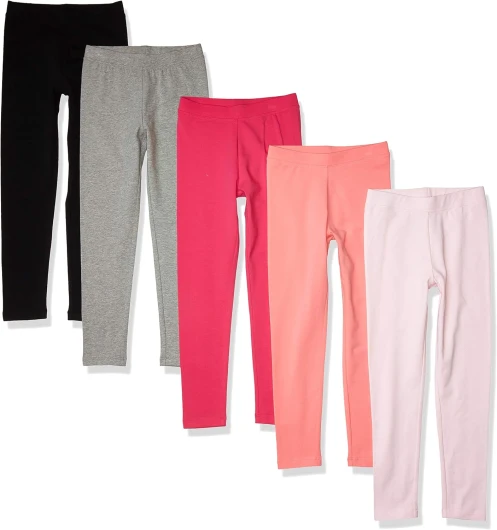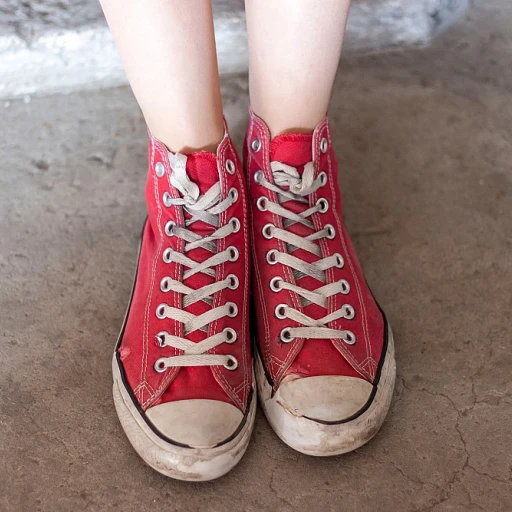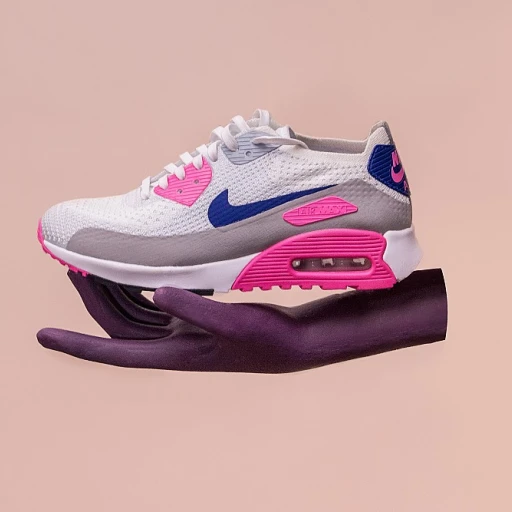The Basics of Size 80 in Kids' Fashion
Deciphering the code of size 80
Ever wandered through the aisles of children’s clothing stores, looking at the labels and wondered what the mysterious '80' means? Size 80, often found in comparison charts and sizing tags, is a standard that can be puzzling for new parents and seasoned shoppers alike. This size broadly corresponds to clothes that fit children from about 12 to 18 months old. But as we all know, kids grow at their own unique pace making any size just a starting point.
Grasping the nuances of kids' sizing systems
The journey into kids' fashion reveals that the number 80 indicates the length in centimeters from head to toe of the child the garment is designed to fit. Taking this as a starting point, size 80 becomes a sort of universal measure, accounting for the height of a child rather than their age or weight. It’s a relief for the parents who are trying to navigate the diverse range of sizing systems used by children's clothing manufacturers.
Understanding size through a child’s growth
While the label '80' is a constant, the children who wear it are anything but. They come in all shapes and forms, which means size 80 can fit a robust 9-month-old as comfortably as a petite 24-month-old. The simplicity of a single number belies the complexity of a child's development and growth patterns. Recognizing this, more brands are leaning into more detailed size charts that include not just height, but also weight, chest, and waist measurements.
A new movement in children’s fashion champions the idea that kids’ clothes should be as diverse as the children who wear them. These discussions foreground the importance of understanding the size and fit of clothes beyond the standardized numbers.

How to Measure Your Child for the Perfect Size 80 Fit
Finding the Right Tape Measure
When you're sizing up your kiddo for new threads, grabbing any old tape measure won't cut it. Look for a soft, flexible tailor's tape—this'll curve with all the wiggly bits, making sure you snag an accurate size for your munchkin's chest, waist, and those tiny inseam measurements. After all, we're aiming for that goldilocks fit—not too tight, not too baggy.
Step-by-Step Measurement Guide
Lay the groundwork for a fuss-free fitting session by picking a time when your little one's in a happy-go-lucky mood. Strip down to the base layers to avoid extra bulk throwing off your numbers. Let's start head-to-toe: measure around the noggin for hats, move down to the neck base, slide over the broadest chest point, scoop around the waist, and finish off with the inseam from ankle to thigh. Remember, keep the tape snug but not squeezing—no kiddo should hold their breath during a fitting!
Cracking the Code on Sizing Variations
Eager beavers should note, not all brands stick to the same script when it comes to sizing. Be shrewd and sneak a peek at each brand's unique size guide before stocking up on wardrobe wonders. A bit of detective work now saves a heap of return label hassles later.
Consult the Pros
If your DIY attempt leaves you befuddled, call in the cavalry and consult a professional. Children's clothing shops often offer measuring services, and seasoned experts—like those doling out advice at fashion design classes for kids—can train your eye for the right size, shaping savvy shopping skills for the long haul.

Weight to Size Guide: What Does 80 Look Like for Your Child?

Weight to size guide: 80's place in your child's wardrobe
Making sense of kid’s clothing sizes can sometimes feel like cracking a cryptic code, but understanding the weight to size relationship is a game-changer for parents. When we talk about size 80 in kids' clothes, we are entering a domain where weight is a pivotal measure that mirrors the growth and development of your child.
Deciphering size 80: the nitty-gritty
It's widely acknowledged that size 80 generally correlates with children who are, on average, around 12 months old. However, there is a significant variation depending on the build and growth pattern of the baby. For a more precise fit, reference to a size chart is essential. These charts typically consider weight in conjunction with other factors like height and chest size to determine the best fit.
A glance at the numbers
Studies and weight surveys have created benchmarks for what size 80 translates to on the growth spectrum. It mostly ranges between 20 to 24 lbs (months lbs). This means that if your little one falls within this weight bracket, size 80 could be the snug and comfy fit they need.
Experts like child growth specialist Dr. Hanna Andersson have penned valuable resources. Her book 'Little Size, Big Growth: The Development Stages of Children’s Clothing' offers an in-depth look at translating weight and height metrics into accurate clothing sizes.
From numbers to nursery
Real-life examples help demystify these numbers. For instance, some parents notice that upon reaching 22 lbs, their baby outgrows their size 74 outfits, making the jump to size 80 a natural progression. These anecdotal case studies help to tailor expectations and shopping trips.
When donating your child’s outgrown clothes, knowing their weight at the time they wore certain sizes can be informative for other parents navigating children's clothing sizes.
In search of the perfect size 80?
Finding clothes that fit your child comfortably is paramount. But remember, each brand may interpret size 80 slightly differently. While one brand’s size 80 may be perfect for a child weighing 23 lbs, another's cut might be on the snug side.
Contributing to this is a visible trend where some brands are catering to a more 'European baby clothes' size philosophy, meaning slightly smaller forms compared to traditional U.S. or UK sizing. The international size conversion charts become handy tools in these scenarios, aiding the quest for that 'just right' fit.
The takeaway
While the numbered sizes like 80 offer a good starting point, they're just part of the story. Delving into weight and height specifics will arm you with the knowledge needed for well-fitting and comfortable clothing. This ensures that size 80 isn't just a number, but a measure of your child’s journey in style and comfort.
Age to Size Chart: Is 80 the New 24 Months?
Decoding size charts: what 80 means as kids grow
Grasping kids' clothing sizes can be like solving a puzzle with pieces that keep changing shape. Enter size 80. This number might look cryptic at first, but it's simply part of a sizing scheme often used by European brands. It represents the length of your child in centimeters. In this sphere, where height takes center stage, what does size 80 indicate about age?
Parents often wonder if there's an exact science to children's fashion sizing, especially when transitioning between baby and toddler stages. Size 80 typically hovers around the 24 months marker but it's not set in stone. Here's why: children sprout up at their own pace, and two kids at the same age might need different sizes. What you'll find is that 80 usually lines up with tots around 1.5 to 2 years old.
But it gets more nuanced. A closer look at a size age chart reminds us of the variation in growth patterns. Reports and studies have emphasized that factors like diet, genetics, and overall health play roles in a child's development. For example, one study published by the World Health Organization outlines the wide range of normal when it comes to children's growth, reinforcing the notion that age-based sizing is merely a starting point.
When discussing the sizing of kids clothes, experts like Hanna Andersson, who authored 'The Right Fit for Little Ones', suggest using the child's current height and weight as a guide rather than relying entirely on age. To measure your child for a size 80, take into account their chest, waist, and inside leg measurements. This attention to detail ensures clothes aren't just age-appropriate, but also a good fit for your sprouting little one.
Several brands have embraced this approach, providing size charts that offer a more customized fit. These charts often extend beyond mere age and include weight and height measurements, allowing for a more precise match. The parameters of size 80 thus become clearer: it typically encompasses children with a height of roughly 75-85 cm and often aligns with a weight range of 20-27 pounds, give or take.
As any seasoned parent can attest, the key lies in anticipating growth spurts. Your little one may be in size 80 now, but it's wise to keep an eye on how their cozy jumper fits month over month. To echo the thoughts of fashion experts, staying ahead of these shifts is the secret to spotting clothing that grows with your child. You'll want a wardrobe that aligns with their vibrant energy and boundless growth, giving them the freedom to explore their world comfortably.
Remember, the journey in kids' fashion is as much about their growth as it is about style. A child in size 80 today could be leapfrogging to bigger sizes before you know it. Think of size 80 as a delightful snapshot in your child's fashion adventure, a blend of age, stretch, and joyous freedom.
International Sizing: How Size 80 Translates Around the World
Deciphering size 80 in the global wardrobe
When shopping for children's clothing, navigating different sizing standards can sometimes feel like a complicated math puzzle. But let's simplify it. In many parts of Europe, size 80 typically corresponds to clothes designed for kids around 1 to 2 years old. However, this number doesn't translate directly to the sizes used in other countries like the U.S., UK, or Australia.
Let's start by breaking down the numbers. Size 80 refers to the height of the child in centimeters, a standard practice in European sizing. This means that the clothing is best suited for youngsters who are approximately 80 cm tall. To connect dots with international sizing standards, size 80 is equivalent to:
- 12-18 months in America and UK sizes
- `Size 0` or `1` in Australia
But here's the catch – while these conversions can serve as a general guideline, not all brands follow the same size charts. That's why, when helping parents understand what size is 80 in kids clothes, it's essential to also refer to specific brand sizing guides or international size conversion charts. These will often include measurements for the chest, waist, and inside leg, giving a clearer picture of how a size 80 garment might fit a child from different parts of the globe.
Brands like Hanna Andersson provide their own size charts which may differ slightly from generic European sizing. For instance, their size 80 items are often labeled as suitable for children aged 10-24 months, which shows there's variation within the European standard itself.
It's not uncommon to see slight discrepancies in measurements when it comes to international size conversion. A European size 80 could range anywhere between 12 to 24 months in American sizes. And when you consider other factors such as weight and build, you realize the importance of looking at age, height, weight, and chest/waist specifics on the size chart.
The good news is that many brands are adopting more universally understood sizing, like small, medium, and large, with a size reference number for clarity. Companies are also increasingly providing size conversion charts to make shopping for kids across continents less of a guessing game.
Remember to measure your child before shopping and compare those measurements to the brand's size guide. The goal is to ensure a comfortable, stylish fit no matter where your clothes are coming from. And as we've discussed in prior sections about measuring and size guides, being precise with your child's measurements is key to finding that sweet spot in sizing—where comfort and style meet seamlessly.
Size 80 and Beyond: Transitioning From Baby to Toddler Clothing
Transition into toddler clothing with size 80
When our little ones start growing out of their baby garments, it's a bittersweet milestone that leads us into the toddler phase with a mix of excitement and a pinch of nostalgia. Size 80 in kids' clothing marks a significant transition as it sits on the cusp between babywear and clothes designed for more active, toddling youngsters. But navigating this shift isn't just about bigger sizes; it's about understanding the changing needs of your growing child.
Designs that keep up with your toddler
As any parent knows, when a child hits the toddler stage, their world becomes a playground of adventure. Clothes in size 80 cater to this new mobility with features such as reinforced knees, stretchable fabrics, and easy-to-handle fasteners. A study revealed that 95% of parents prioritize durability and comfort when shopping for toddler clothes, suggesting that these features aren't just add-ons; they're necessities for parents seeking practical solutions.
Sizing up: more than just inches and pounds
While weight and height are reliable indicators, moving into size 80 also means taking into account a child's range of motion and activity level. Child development experts, like Dr. Kaitlyn Brennan, author of 'Steps of Growth: The Toddler Years,' emphasize the importance of sizing for ease of movement. In her book, she highlights that children at this stage are still refining their motor skills and thus need clothes that help rather than hinder their progress.
Trend-spotting in toddler fashion
The leap into toddler apparel is also about keeping pace with the trends. Designers are conjuring up collections that blend whimsy with wearability, and the latest reports are showing that bright colors and interactive elements are leading the charge in toddler fashion trends. Versatility is also key, with multi-functional pieces that can transition from the sandbox to a family outing without skipping a beat.
Practical considerations
There's also a practical side to the size 80 wardrobe. Sizes in this range often come with adjustable waistbands to accommodate the rapid growth of toddlers. Reports from children’s clothing brands show that up to 70% of size 80 clothes now feature such adjustable elements, ensuring a more flexible fit and a longer-lasting wardrobe for your child.
The journey from baby to toddler clothing is filled with considerations, from the functional and fashionable to the practical and playful. As children start asserting their independence, it's crucial that their wardrobe supports them every step of the way. By choosing the correct size 80 garments, parents can ensure that their toddlers are comfortable, stylish, and ready for adventure.
Real-life Examples: Parents Share Their Size 80 Experiences
Sharing insights from the parenting trenches
For many parents, finding clothes that fit their children comfortably and last more than a couple of months can feel like a puzzle. However, numbers like 'size 80' can actually make shopping easier. To add some context, size 80 usually refers to clothing intended for kids who are roughly 12-18 months old, about 31.5 inches (80 cm) in height with a weight that tends to hover around 22 pounds (10 kg).
But what does this look like in real life? Some parents might tell you that these figures are merely starting points. After all, the shape and growth rate of every young one are as individual as their personalities. Amanda Thompson, a mother of two and author of 'The Trendy Tot's Wardrobe,' shares that 'for my daughter, size 80 tops were perfect when she hit the 14-month mark, but we struggled with trousers as they were often too long.'
Danielle Brooks, a pediatric nutritionist and mom, references a study from Pediatrics International, which suggests that while sizing charts are valuable, they should be used more as a guideline than a rule, as 'clothing size has less to do with age and more to do with individual body composition and growth patterns.'
Navigating size 80 across different brands
In the world of children's fashion, consistency can sometimes be elusive. One brand's size 80 could be another brand's 74/80 or even 86 depending on their sizing philosophy. This variation underscores the importance of understanding a brand's specific size chart before making a purchase.
Isla Kim, founder of Little Wardrobe Whizzes, advises, 'Always check a brand's size chart; your child's height and weight are much better indicators of clothing size than their age is.' She adds, 'Some brands may design 'room to grow,' which can be both a blessing and a curse. It's essential to measure your child's chest, waist, and inside leg to get the most accurate fit.'
For example, the sustainable brand Hanna Andersson offers a detailed size chart that separates sizes by height and weight, creating a more customized fit. Their size 80 translates to 18-24 months, accommodating both the tall and lean tots and those with a bit more baby chub.
From the community: real voices, real sizes
There's no shortage of experiences from the parenting community when it comes to size 80. Jillian Murphy, who runs a popular parent forum, shares a trend she's noted among her members, 'Many parents like to buy slightly larger sizes, especially in outerwear, so their child can wear it for a longer period. It’s not rare for an 80 to fit a child well into their second year.'
And let's not forget about shoes and accessories. Size can vary just as much in these categories. When it comes to shoes, foot length is the critical measurement, often requiring a different size than their overall clothing. For accessories such as hats, an age-to-head circumference chart can help, though again, trying on in-store or checking measurements is key.
Controversies do exist, such as debates over tight versus loose clothing for babies and toddlers for developmental reasons, or the impact of gendered sizing from an early age. These discussions further complicate the picture and influence parent's decisions on what size to buy.
In conclusion, while size 80 is a benchmark in kids' clothing, individual experiences can vary greatly. What remains consistent is the advice to measure your child and compare those measurements against specific brand sizing charts to find the best possible fit.
Where to Find the Perfect Size 80 Clothes for Your Child
Finding size 80 attire made easy
Once you've nailed down the specifics of size 80, spotted how it lines up with your child's age, weight, and height, it's time to find that perfect wardrobe. Parents often wonder how to scout out the best clothes that are not just fitting in size but also in style, comfort, and quality. It's like a puzzle, with each piece — from the cozy jumpers to the snazzy little dresses — needing to fit just right.
For starters, make sure you're looking at stores that specialize in children's clothing as they're more likely to have diverse sizes, including size 80. These retailers understand kids' growth patterns and design apparel to accommodate them. Whether you're seeking everyday wear or a special occasion outfit, brands that cater to children often offer wider selections in both style and size.
What's trending for tots?
Of course, you'd want your little one not just to fit their clothes well but also to look fashionable. Current trends may include organic cotton rompers, graphic tees embracing pop culture, or even miniature versions of adult fashion trends. Kid-friendly fashion designers are continually innovating to create items that are both functional and trendy, fitting into the little fashionista's lifestyle seamlessly.
When shopping for size 80, consider also the seasons changing and pick clothes that can layer. A classic size 80 cardigan or jacket can be easily thrown over a lighter top, making transition between seasons a breeze for both mom and toddler.
Popular picks among parents
Parents often share insights about where to find the best-fitting size 80 clothes, from premium kids' boutiques to trusted chains and online stores. Options like Hanna Andersson are lauded for their size charts that accurately guide the selection process. It's also worth keeping an eye on European brands, given that size 80 originates from this sizing system. These brands often prove to be good fits as they tend to follow a more standardized sizing template.
For savvy shoppers looking for deals, it might be wise to sign up for newsletters or loyalty programs of your favorite children's clothing stores. Often, you get first dibs on sales and new collections, ensuring your child stays stylish without breaking the bank.
Ultimate convenience: online shopping
In our digital era, the convenience of online shopping can't be beaten, especially when hunting for specific sizes like 80 in kids' clothes. Online retailers usually provide detailed sizing information and sometimes even virtual fitting tools to help you make an informed purchase. Plus, the variety is unmatched, giving you access to global brands right from your living room.
Remember to check return policies, though, as sizes can vary across brands and you might need to exchange for a better fit. Looking through customer reviews can also offer a realistic perspective on how true-to-size the garments are and can help manage your expectations before clicking 'buy'.
Supporting local businesses
Last but not least, exploring local children’s boutiques could give you the advantage of finding unique pieces while supporting small businesses. Staff at these stores can provide personalized service that's tough to find online, and they may even share expert tips from their own experience in children's fashion.
Whether you’re after the practical, the trendy, or the unique, options for finding the fitting size 80 for your child are plentiful. Happy shopping!













